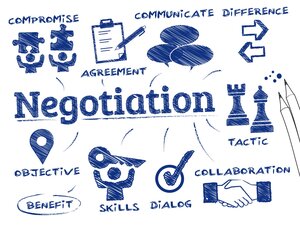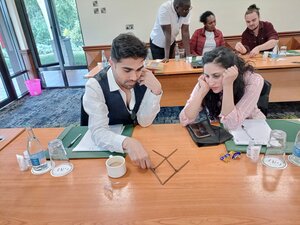Course Overview
A prospect’s existing understanding of what you provide and how you provide it may be the basis for objections, which are reservations about your organization, goods, or services. The typical response from buyers who aren’t entirely sold on a purchase is an objection. This training focuses on identifying the common causes of objections and developing strategies to allay buyer reluctance. The workshop will include:
Examine buyer demands and the significance of matching products and services to them, study a variety of practical models and frameworks, discover the root of most objections and replies for addressing those concerns, and practice language for replying to “no.”
Course outcomes
- Identify more than 50 objections that individuals have when making a purchase and offer solutions for addressing them.
- Offer a method for describing a client’s or customer’s decision-making process.
- Give an example of a strategy for locating a competitive advantage in a multi-seller scenario.
- Examine client wants and the significance of understanding what matters to them.



Course Objectives
- Identify the reasons behind the buyers’ reservations.
- Explain how your customers make decisions.
- Investigate their rivals and devise tactics for reducing their advantages and positioning themselves against their shortcomings.
- Describe the Elements of Value research by Bain & Company and how it relates to understanding consumer demands.
- A variety of objections should be avoided, anticipated, and addressed during the sales process.
The course’s main takeaways are highlighted in the outline that follows. We will adapt the content in your training program as necessary to achieve your company goals. Before the session, we will send you a copy of the participant materials if you ask for it (s).
Organizational advantages
- Creating a marketing intelligence system using the relevant data
- Ensuring effective administration of integrated marketing communications
- Improved after-sales and sales services
- Increased market share increased likelihood of sticking out from the competition improved market image development
- Greater likelihood of repeat business
- Collecting more effective sales promotion methods
Personal advantages
- Being more capable in the role of selling
- Having the ability to explain and demonstrate products
- Timely reaching set sales goals
- Recognizing the value of preparation before making a transaction
- Collaborating with employees from many areas around the firm
- Analysis of statistical data to enhance understanding of consumer base and historical sales
Sales Training Highlights
Training Feedback
Happy Customers
Course Outline
Enter: Recognizing the source of objections
Avoiding objections in the first place is one method to overcome them. This course begins with a study of the common reasons why people balk or hesitate when asked to sign a contract. Three methods for addressing a buyer’s reservations will also be covered throughout this session. Participants will next go over a list of complaints and choose the ones that purchasers raise the most frequently. The goals of the program will be confirmed by these responses, and we will utilize them to inform the remainder of the session’s agenda.
Put Your Best Foot Forward: Analyzing Your Decision-Making Process
Because they don’t comprehend a customer’s purchasing process or how an organization would employ a product or service, salesmen can run across the resistance. Participants in this round of the curriculum will develop a purchasing model unique to their target audience. The information they should collect at each stage will then be identified, and the terminology for doing so will be discussed.
When You’re Not the Only One: Investigating Your Rivals
Why bring up the contest? Because every salesperson eventually faces up a rival company that provides comparable goods and services. The attendees will undertake a competitor analysis throughout this portion of the workshop. We will then go over strategies for emphasizing advantages over a rival’s offerings.
Meeting needs through threading the laces
The emphasis of this program segment is on needs and the significance of addressing a variety of them. We will spend time in this section of the course studying Bain & Company’s Elements of Value study, whose conceptual underpinnings may be found in Abraham Maslow’s work on needs hierarchy. Participants will think about 30 criteria as they go through a ranking exercise to determine the top five demands that their products or services address. We will talk about how to present that information when speaking with prospects once they have identified the top demands that their products or services satisfy.
Overcoming Objections: Untying the Knots
The list of objections that were generated at the beginning of the session will be reviewed in this last course component, and we will devise a plan for avoiding them, anticipating them, and responding to them if the first two phases don’t completely silence them. The tasks in this section of the program include roleplays, strategy mapping, and finding words that keep the dialogue moving.
Who Should Attend
- Senior marketing directors or managers
- Relationship managers and
- Customer relationship managers
- Professionals in customer service, supervisors,
- Team leaders, and managers
- Sales experts, salespeople, and sales analysts
- Entrepreneurs and founders of startups
Trainers Available for:
- In-House Trainings
- Online Training
- 2 Hours Crush Program
- Half Day Program
- One Day Program
- Two Days Full Program
Training Techniques
- Power point Presentations
- Engaging conversations
- Case studies
- Exercises in solving problems
- Focus Group Conversations
- Games in Management
- Skits and modeling the part
Request a Quote

